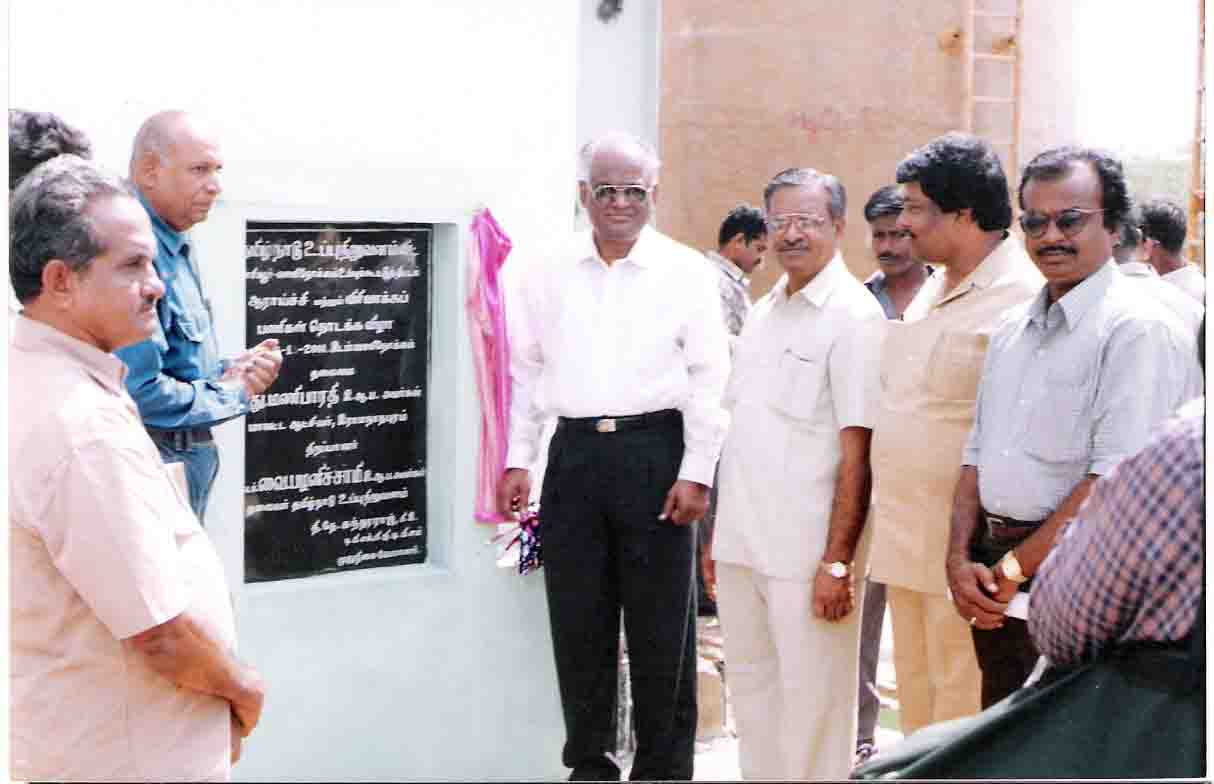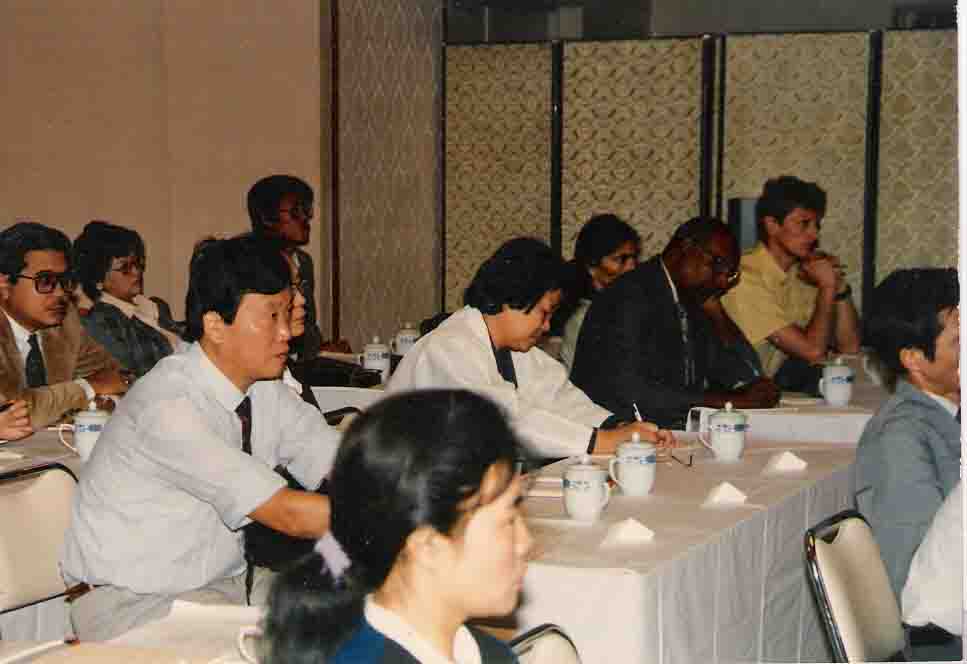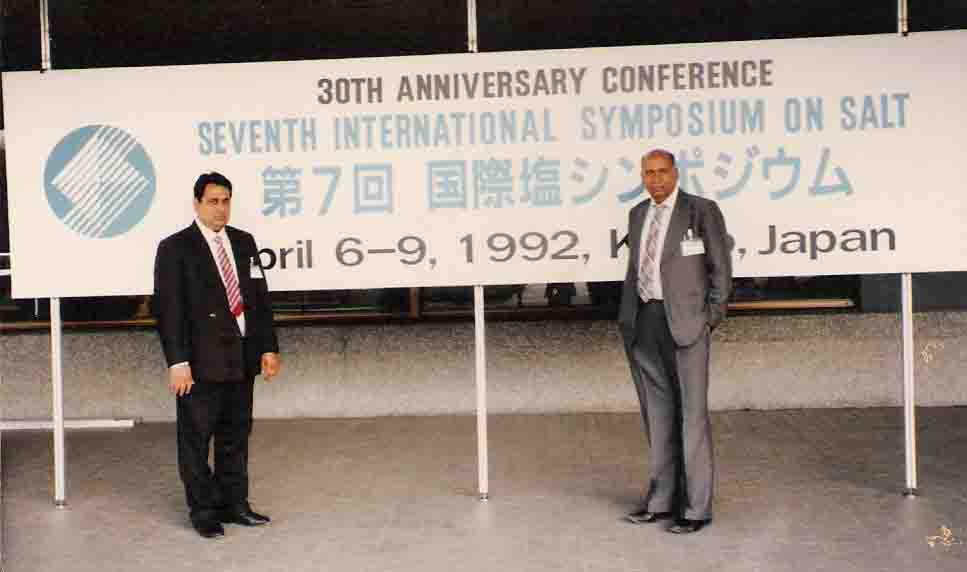
Project development
Erat, sed diam voluptua. Consetetur sadi pscing elitr, sed diam nonumy eirmod Erat, sed diam voluptua. At vero eos et accusam et justo.
Project developmentErat, sed diam voluptua. Consetetur sadi pscing elitr, sed diam nonumy eirmod Erat, sed diam voluptua. At vero eos et accusam et justo.
Salt science
A reality in the new millennium
Introduction
Salt science offers equity among human populations in terms of health, productivity and prosperity. Hence, there is a need to integrate these findings and applications of knowledge of salt science from physical, chemical, biological, biotechnological, bioengineering aspects to a sustained productivity of salt and salt- related products and by-products. In any solar salt works, biological organisms constitute a living dynamic saline ecosystem essential for production of salt. The primary goal of saltern engineers is to optimize the quality and quantity of salt produced by solar evaporation. Traditionally salt production has been managed by monitoring physical and chemical factors in the reservoirs, condensers and crystallizes brine density temperature pH rainfall wind evaporation rates, pumping rates and brine depth. In addition to nutrients, trace elements, sediment composition, pond design and brine practices are other factors essential for balanced ecosystem in solar salt works. However, more recently, biological factors have been recognized as an important variable in the production of high quality salt. It is now understood that salt companies should employ biologists to monitor living organisms and their products in their salterns. This decentralized non- polluting low cost technology forms the basis for sustained high productivities with minimum investment. These organisms have the ability to :
- Color the brine of all ponds resulting in sufficient heat and light absorption to raise water temperatures and thus aid in evaporation and to supply bio-fuel to down stream ponds.
- To form bio-mats on the bottom of ponds to prevent brine leakage.
- Recycle and entrap minerals and organic materials.
- Oxidize to safe levels of organic materials produced
BRINE BIOLOGY CONCEPT (BBC)
Brine biology is interesting consists of several inter-connected living compartments
- Plankton: These serve to color water is the group of algae, protozoa, bacteria, and brine animals, suspended in the brine.
- Benthos: It aids in sealing the ponds consisting of microorganisms, nematodes and small Mollusks.
- Fringe community: A fringe community includes mangroves, grasses and saltbushes growing in the ecotone region.
The solar salt work can be grouped into low (35 -190ppt) medium (90-180ppt) and high (180- 300ppt) salinity ingredients. Hydro biological activities in solar salt works largely determines the quality and quantity of salt produced. Algal blooms induced by natural availabilities of organic and inorganic nutrients are generally beneficial since they ensure increase solar heat absorption, resulting in faster evaporation and increased yields of salt. However, if they are not metabolized in time, algal excretion and decomposition products, such as dissolved carbohydrates act as chemical traps and consequently prevent early precipitation of gypsum which will contaminate in sodium chloride in the crystallizes and reduce salt quality. Further work, such organic impurities as algal agglomerations, which turn black on oxidation, may contaminate salt and reduce the size of the crystals and hence salt quality. In worst situations, high water viscosities may completely inhibit salt crystal formation low low lowprecipitation. The presence of Artemia is essential not only for controlling algal blooms, but also providing essential nutrients from Artemia metabolites and or decaying animals as suitable substrates for the development of holobacterium in the crystallization ponds. High concentrations of red halophytic bacteria promote heat absorption, thereby accelerating evaporation, and reduce concentrations of dissolved organics. Low viscosities promote the formation of larger salt crystal, thereby improve salt quality.
Algal mats in the saltern can be divided into three layers: aerobic layer, redox-discontinuity layer, anaerobic layer. The algal mats valuableorgano-sedimentary structure for transforming soil, purification of brine, reducing leakage the brine, raising water temperature and accelerating evaporation.
Artemia management in salterns leads to improved salt production outputs and also provides the opportunities for the exploitation of the valuable byproducts Artemia, as cysts and biomass. Biological management plan in saltern involves controlled introduction of a selected Artemia strain with optimal productivity. At present over 350 different geographical strain of Artemia are known characterized by a degree of genetic variability and diversity in various quantitative characteristic such as temperature/ salinity tolerance and growth and reproductive performances, providing a basis for a selection of the strain best adopted to environmental conditions prevailing in the habitat. If one is aiming at harvesting and marketing of Artemia cysts one should select a strain, which produces high quality cysts in terms of nutritional value and hatchability. One of the factors determining their nutrient value is their size. Large cysts produce large nauplii which are less suitable for feeding the early larval stages of fishes and shrimps.
Artemia: Zooplankter
On site observation have confirmed that local parthenogenesis origin has a rather limited productivity at lower temperature regimes prevailing in the pond. When San Francisco Bay strain is cultured under similar conditions, they develop pre-adults in less than two weeks. How ever, the cysts production compared to biomass was found to be low and hence for commercial exploitation of cysts, even SFB strain is un suitable under prevailing conditions in the salterns of our country. After much trail on commercial scale production, it is now found that Vietnam strain of Artermia has a good potential for production and marketing as the cysts are now sold at a cost of Rs.9000/-Kg.
Dunaliella salina: The Brine Alga
Dunaliella salina is a unicellular alga with two flagella found in habitats of varying salinities in salt ponds. In natural hyper saline ponds, it sometimes forms red" bloom". It can exhibit a green-to-red transformation. Many environmental factors participate in this color transformation such as high light intensity, high temperature, high salinity, nitrogen or phosphorous deficiency. The cells contain high amount of B-carotene, color ranges from yellow to orange. It has no known toxicity. It is a pro vitamin A and can be converted to vitamin A only as and when the body needs it, whereas vitamin A tends to be toxic when taken in large amounts. Several clinical studies have shown that there is correlation between incidence of cancer in humans and the B-carotene levels in the blood. Thus consumption of foods containing B-carotene, especially natural B-carotene, may help to prevent certain types of cancer as well as providing protection against uv-irradiation, improving resistance to various infections and slowing down the aging process. B-carotene has ability to kill several kinds of cancerous cells (brain cancer, leukemia, stomach and liver cancer etc.,) but does not affect the functions of normal cells. Natural B-carotene may possibly be the drug of first choice for cancer prevention and cure in the near future. Significant improvements were observed in those suffering from cancer of esophagus, lung, and stomach asthma, inflammation of the throat, leucoplakia and stomach and intestinal ulcers. Most of the patients experienced reduced discomfort, improvement of appetite and sleep and a general improvement of health.
Seaweed and lodine deficiency
Feasibility study of a natural salt using seaweed as an ingredient is to be made. In view of the lifting of the ban on the iodized salt much study will help to a large population to consume naturally occurring iodine through seaweed. Seaweed such as Gracilaria verrucosa is already available in our coast. The availability of raw material and possibility of utilizing technology from CMFRI for mass culture in the reservoir ponds and integrating it with salt production is a prospective venture. Stability studies in the case of iodine in the seaweed ingredient and in the iodized salt stored under different conditions, consumer acceptance, clinical studies and bioavailability of iodine in comparison with potassium iodine has to be done.
Salt related technology:
Brine treatment
The chemical composition of brine is relatively high in Mg and So4 salts due to geological formation. Hence, the raw brine in addition to NaCl contains dissolved Ca and Mg, which is, precipitated lime soda process. The precipitation is made in two stage batch reactors with a daily out capacity of 3000 m3. The first stage uses Ca(OH) 2 and the second Na2CO3. Transforming the NaOH in solution to Na2CO3 with CO2 gas reduces the Na2CO3 consumption. Treatment of waste brine includes, elimination of SO4, precipitation of Mg(OH)2 and formation of MgO, preparation of KCl, NaCl and CaCl2, conversion of CaSO4 into CaCO3. Brine purification is necessary for high purity, uniform salt crystals(not < 0.1mm), low energy consumption, high availability (long intervals between evaporator boil outs), reduced operating labor, short start up time and plant life expectancy.
Bittern as fertilizer
Global annual production of salt is around 185 million tones. India produces about 14 million tones per annum. This suggests that considerable brine in the form of bittern is generated and unutilized after recovery of sodium chloride. The bittern containing magnesium has been utilized as a raw material for the production of low soluble, chloride free multinutrient fertilizer known as ammonium magnesium phosphate.
Ca++ removal technology
Removal of Ca++ from seawater will be done using recycling oleic acid. The advantages in this technology are: reduction of the evaporation area in the solar salts works, production of fresh water for drinking in the coastal region and it is an ideal mineral water for marketing, production of quality of salt in terms of NaCl and CaCl2.
Power from bittern
The bittern need to be stored at least 2 meters in conical shape pond so that the heat is high in the bottom, which could be tapped for separating the salts. The following factors govern for better heat storage: solar radiation energy, heat exchange condition with under lying soil, pond design and salt chemistry (production of KCl, K2SO4, bromine, Na2SO4, MgSO4, MgO and MgCl2)
Artemia : An Excellent Biotool
Salt science becomes an interesting course in biology curriculum. In addition Artemia becomes an interesting biomaterial for biology education. Production of Artemia is possible year around generation after generation. Artemia as a primitive animal possess interesting salient features:
Head: Five pairs of appendages antennules, antennae (modified claspers in male), mandibles, maxillae, stalked eyes.
Trunk: 11 pairs Pyllopodia biramous, endopodite locomotion, exopodite, gills, respiration, telopodite for filter feeding.
Exoskeleton Transparent soft paraffin sections can be prepared eggs fertilization
Exercises: Osmoregulation, O2 consumption, enzymes in tissues and organs, heart pulsation, blood circulation.
Several exercise dealing with Artemia morphology can be designed for the benefit of students:
Observation-anatomical features-Typical nauplius
Adult body plan-appendages-external structures
Sexual dimorphism
Microscopic observation-internal organ system-especially nervous system-alimentary tract -vascular system and others
Histological observation -organs, tissues, such as nauplius
Compound eye, striated muscle showing A, and I.Z and H bands-at low magnification. Gut epithelium, columnar mid gut, epithelial cells.
Pseudopodium like cytoplasm extrusions-mid gut cytoplasm extrusion suggestive of secretion of digestive enzymes from paired pouches.
Observation of superficial cleavage and early development of embryos found in ovisac.
Observation of late development of nauplii and meta nauplii.
In addition to the above exercises, salt science constitutes an interesting curriculum at higher secondary or high school levels. Several aspects of salt science can be taught: physical properties, ionic bonds, chemical reactions of salt, water conditioning and importance in human health and nutrition.
Conclusion
Indian salt industries have to integrate all technologies available in the global level in order to promote salt industry as an essential basic raw material producing industry. Further attention on micronutrients, natural iodized salt, industrial chemicals, desalinate water for drinking and providing education for science students and R & D of industries/institutions.
Published : Prospects and Problems of Environment - Across the Millennium, Editor Dr.M.N.Madhyastha, Daya Publishing House, Delhi, 2003, p.311-317





Copyright 2005 @ wasterecycleinfo.com A StudioFx creation